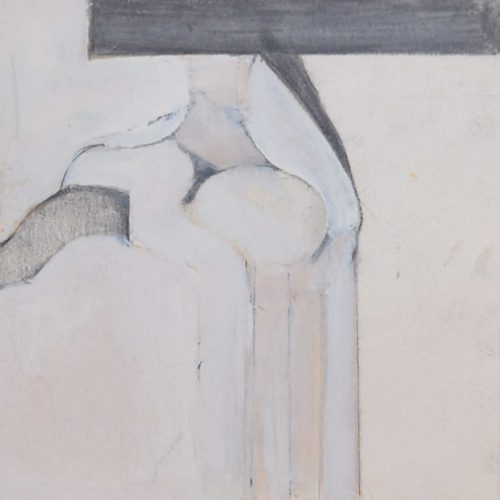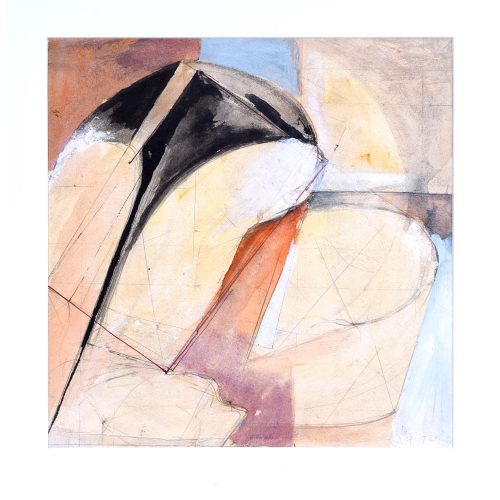Adrian Heath (1920-1992)
Heath was born in Burma in 1920 and arrived in England aged five. In 1938 he studied art under Stanhope Forbes at Newlyn and later at the Slade School of Art. Serving as a tail gunner in a Lancashire in WWII he was captured, and spent the remainder of the war as a POW in the Bavarian prison camp Stalag 383. Captured again during an escape attempt, Heath was placed in solitary confinement. This isolation proved crucial to his art as he passed much of the time experimenting with abstract forms. When released from confinement he befriended a fellow POW, Terry Frost. Together they practiced methods of painting, and following the war both became a celebrated artists.
In 1949 and 1951, he returned to Cornwall again. Mixing with other artists such as Ben Nicholson, Victor Pasmore and Anthony Hill, Heath became the main link between the emerging St Ives School of artists and the British Constructivist movement back in London. He is further credited with promoting British abstract art through informal exhibitions in his studio on Fitzroy street and his manifesto-like text entitled ‘Abstract Art: Its Origins and Meaning’, published in 1953.
Over time, Heath’s paintings of abstract geometry and symmetry became increasingly dynamic and heavily textured, the result of layering paint over many days. This artistic development can be seen in the Tate Gallery’s chronological survey of the best British art. Heath’s work occupies Room 10, portraying the British abstract movement through the 1950s.


